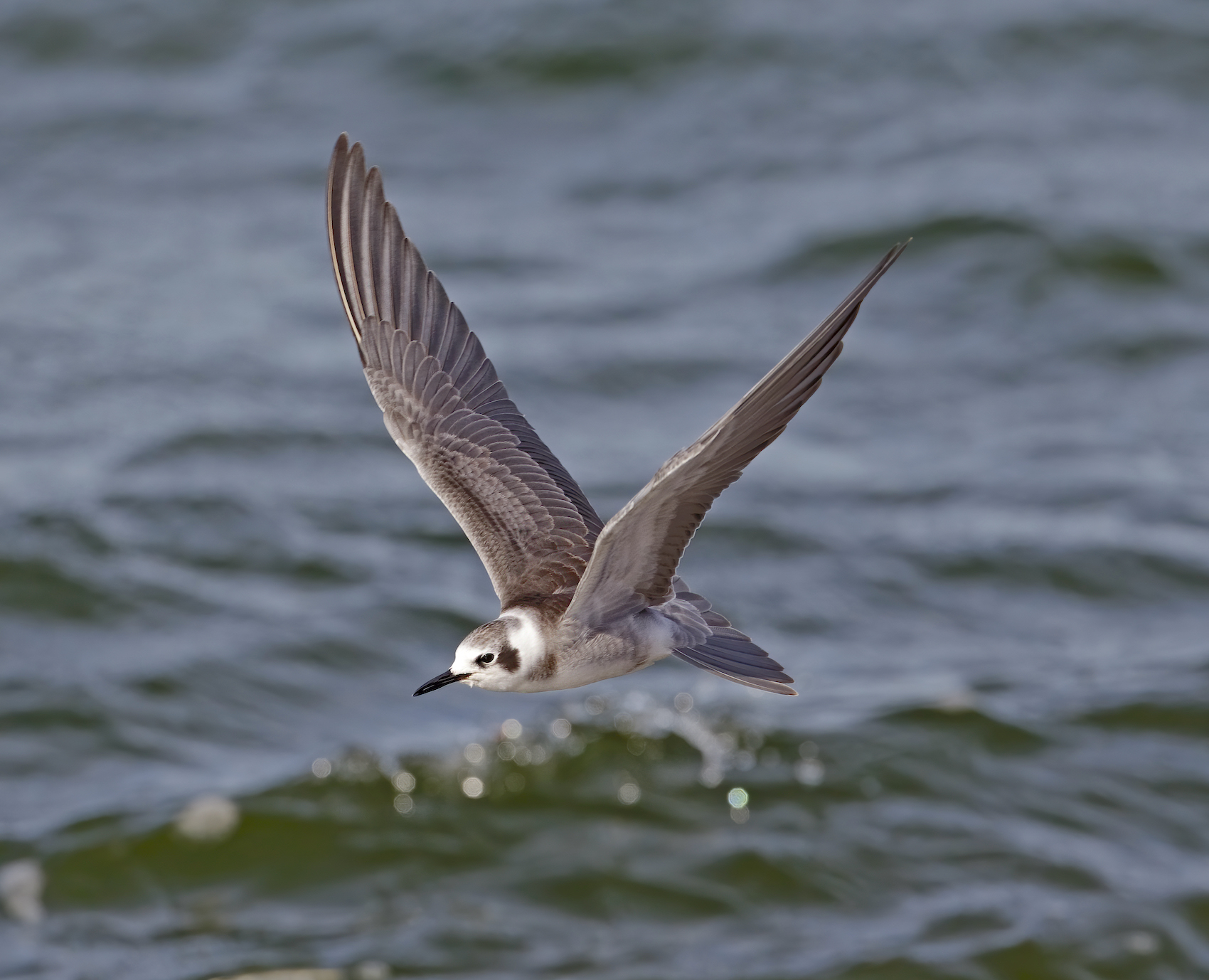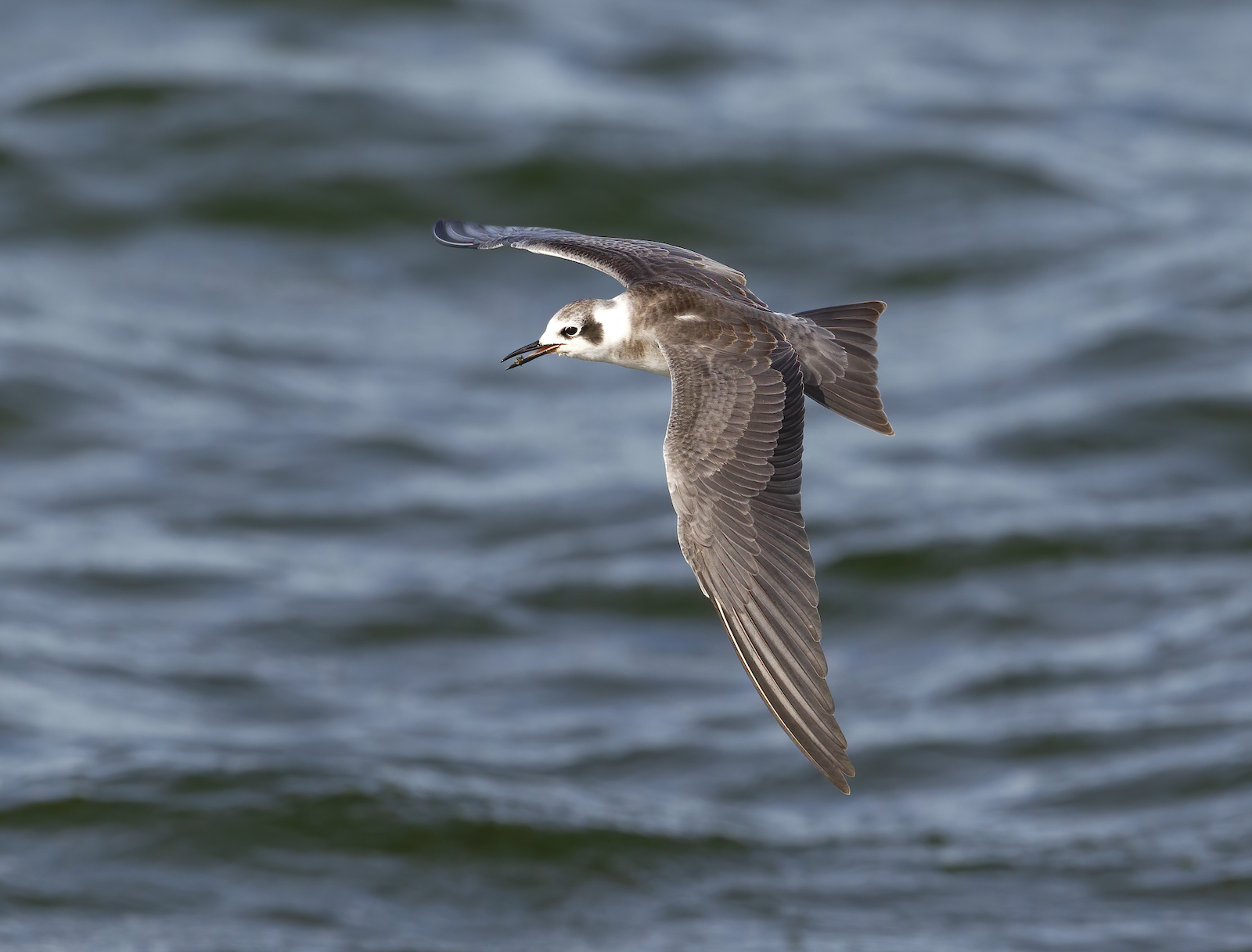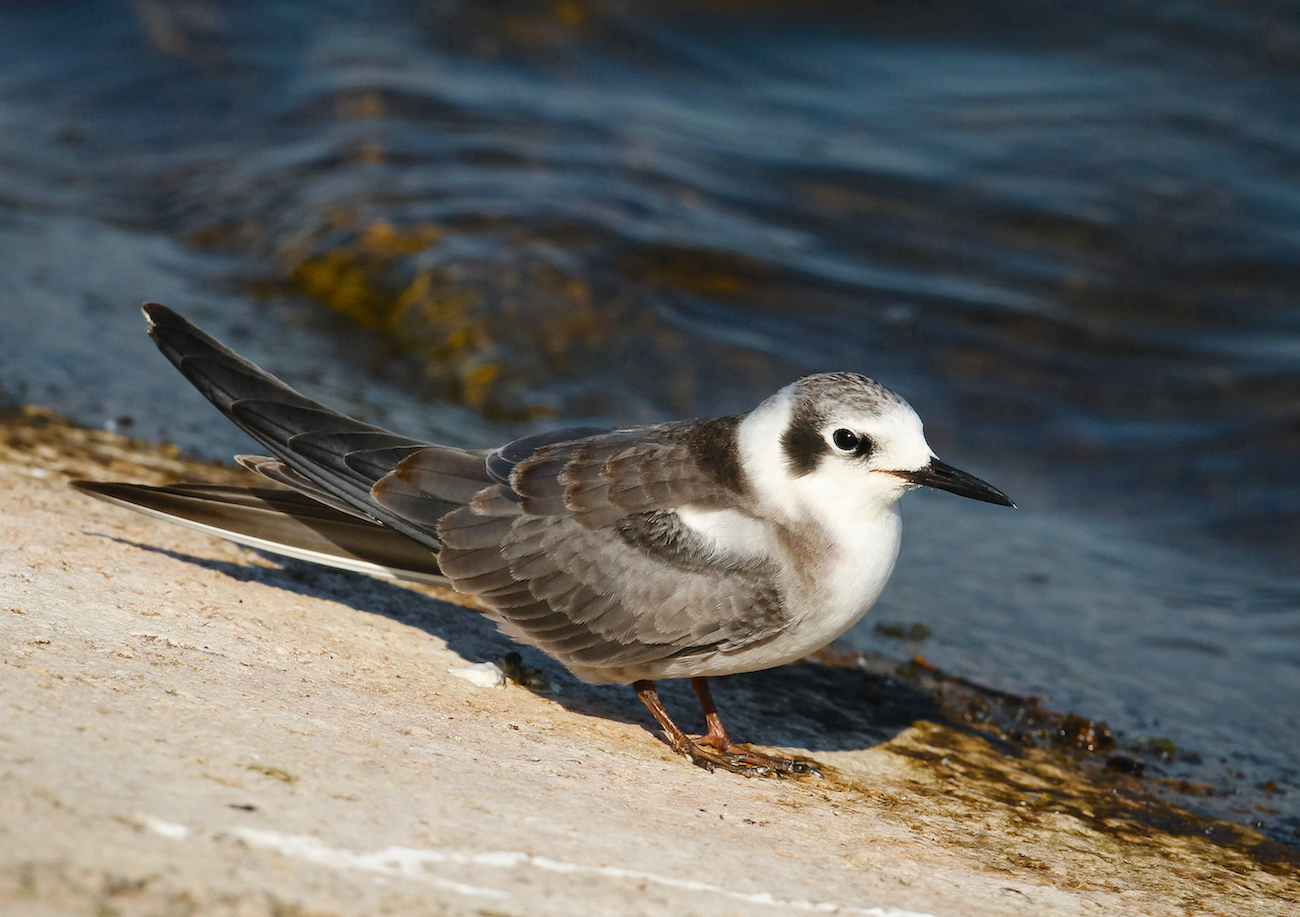American Black Tern Chlidonias niger surinamensis



An obliging juvenile American Black Tern, Chlidonia niger surinamensis, was found at Covenham Reservoir on September 17th 2011. It stayed until October 7th and and was the first record for Lincolnshire of this distinctive north American sub-species of Black Tern. It was also just the fourth British record, all of which have been juveniles. It is considered that this bird was also seen in Yorkshire on October 3rd as it is a relatively short flight across the Humber from Covenham to Spurn, and the bird was certainly absent from Covenham during the morning of October 3rd.
This sub-species has been treated as a separate species by some authorities on account of “plumage, moult, structural and other differences” but further research needs to be done and it has not been accepted as a species in its own right by IOC. Given good views it seems that identifying a lone juvenile surinamensis, like this one, can be relatively straightforward. However, sorting out a distant bird in a wheeling flock of terns is likely to be much more of a challenge. This race C. n. surinamensis breeds widely throughout temperate interior Canada & northern USA. It migrates through interior & coastal USA to winter from Panama to northern South America, and south to Peru & Venezuela.
| Site | First date | Last date | Count | Notes |
| Covenham Reservoir | 17/09/2011 | 07/10/2011 | 1 | 1CY. |
Finder’s report: American Black Tern at Covenham Reservoir, September 17th, 2011, first county record
by G. P. Catley
Note: This account is based on the article published in Lincolnshire Bird Report 2011. The BBRC report for 2011 noted that this was the fourth British record and considered that the bird seen October 3rd, 2011, at Spurn was the same individual as the Covenham bird.
Circumstances
On the morning of September 17th, I decided to do a seawatch off Sandilands, south of Mablethorpe in the hope of a lingering shearwater or skua; after four hr. of very little I headed to Covenham Reservoir with no real hope of finding anything of note, but the chance of a Sabine’s Gull or a Nearctic wader meant it was worth a look. Upon arrival I was none too pleased to see windsurfers speeding into the supposed wildfowl sanctuary in the SE corner, putting all of the wildfowl and grebes to flight. A scan revealed a juvenile Red-necked Grebe on the south side and as I took some photos of it the bird began calling frequently before flying west and joining a moulting adult. Both birds had a striking amount of yellow on both mandibles, so with a vague recollection of the North American race, so-called Holboell’s Grebe P. g. holbollii, having mostly yellow bills I tried to get some decent shots of the birds for future reference. While squatting down waiting for the grebes to drift closer in, out of the corner of my eye I saw a small tern flick over the west bank of the reservoir from the landward side and drop on to the concrete wall. A quick look with the ‘scope showed that it was a Black Tern, but the head pattern looked rather like White-winged Black Tern and the upperparts were quite dark. Two days previously I had been studying a juvenile Black Tern on my local patch, but its gleaming white flanks and underwing coverts combined with the obviously paler rump quickly ruled out any real thoughts of American Black Tern, but to make 100% sure of this individual, I went home and dug out the October 2009 copy of Birding World with the article on the Farmoor Reservoir American Black Tern. Study of the superb plate by Ian Lewington entrenched the requisite features for identification of this bird in my mind although I had certainly not expected to have been calling on my memory banks as quickly as two days later. Back at Covenham I closed the 500m gap on the perched tern only to see it flush as two people walked by, but it soon landed again, and I took several photos getting slightly closer without wanting to flush the bird. It seemed tired and with a strong westerly wind blowing I did not want to cause it any further distress by flushing it. The views on the deck seemed to state that as unlikely as it may have seemed, this was indeed a juvenile American Black Tern in Lincolnshire!
Description
Head - the head pattern was striking with small black ‘head-phone’ spots joined over the crown by a fine wash of dark grey streaks; the forehead, chin and throat were bright white, as was the lower nape.
Upperparts – quite uniform grey but with an obviously darker brown tone to the mantle which, like the head pattern, resembled White-winged Black Tern. The dusky spot on the breast sides was more diffuse than in Black Tern and clearly spread out and extended round the carpal on the closed wing, and although difficult to see it seemed to go right down the flanks.
Underparts – from head-on, the underpart pattern was striking – by now I was pretty certain that it was an American Black Tern – but I was conscious of the need to see the underwing and hopefully get some photos showing the extent of the flank wash and the underwing coverts. At this point the bird suddenly got up and was caught by a strong wind drifting high to the east across the reservoir. Attempts at a flight shot were rudimentary but as I dared to check the camera viewfinder the undersides revealed the hoped-for pattern.
Further observations
A bit later, I found that the bird had settled on the bank at the opposite corner of the reservoir 1.2 km. away; at this distance it looked incredibly small and head-on bore a resemblance to a Grey Phalarope. As the first birders arrived the windsurfers flushed the bird again but this time it looked more adept on the wing and seemed positively fit and healthy compared to my first views. As more people arrived the tern flew west out of the reservoir and settled on a newly ploughed field with Black-headed Gulls, compared to which its amazingly small size was stunning. There then followed a pattern of the bird resting and preening on the adjacent ploughed fields interspersed with bouts of feeding over the reservoir. On September 18th, a warmer and sunny day, on two occasions it flew at least 2 km. high to the SW following departing Black-headed Gulls, but it eventually returned. The habit of resting on the ploughed fields was repeated on 18th even when no gulls were present and was something never seen from Black Terns on the reservoir in the past.
It remained at Covenham Reservoir up to the morning of October 7th and became particularly showy later in its stay as it patrolled the eastern bank of the reservoir catching insects and picking invertebrates from the surface of the water. This was the fourth British record of this distinctive bird, all of which have been juveniles.
Reference
Catley, G.P.C. (Undated). American Black Tern Chlidonias niger surinamensis, Finder Reports, p194. Lincolnshire Bird Report 2011.
Hudson, N. and the Rarities Committee (2012). Report on rare birds in Great Britain in 2011. British Birds 105(10): 589.

